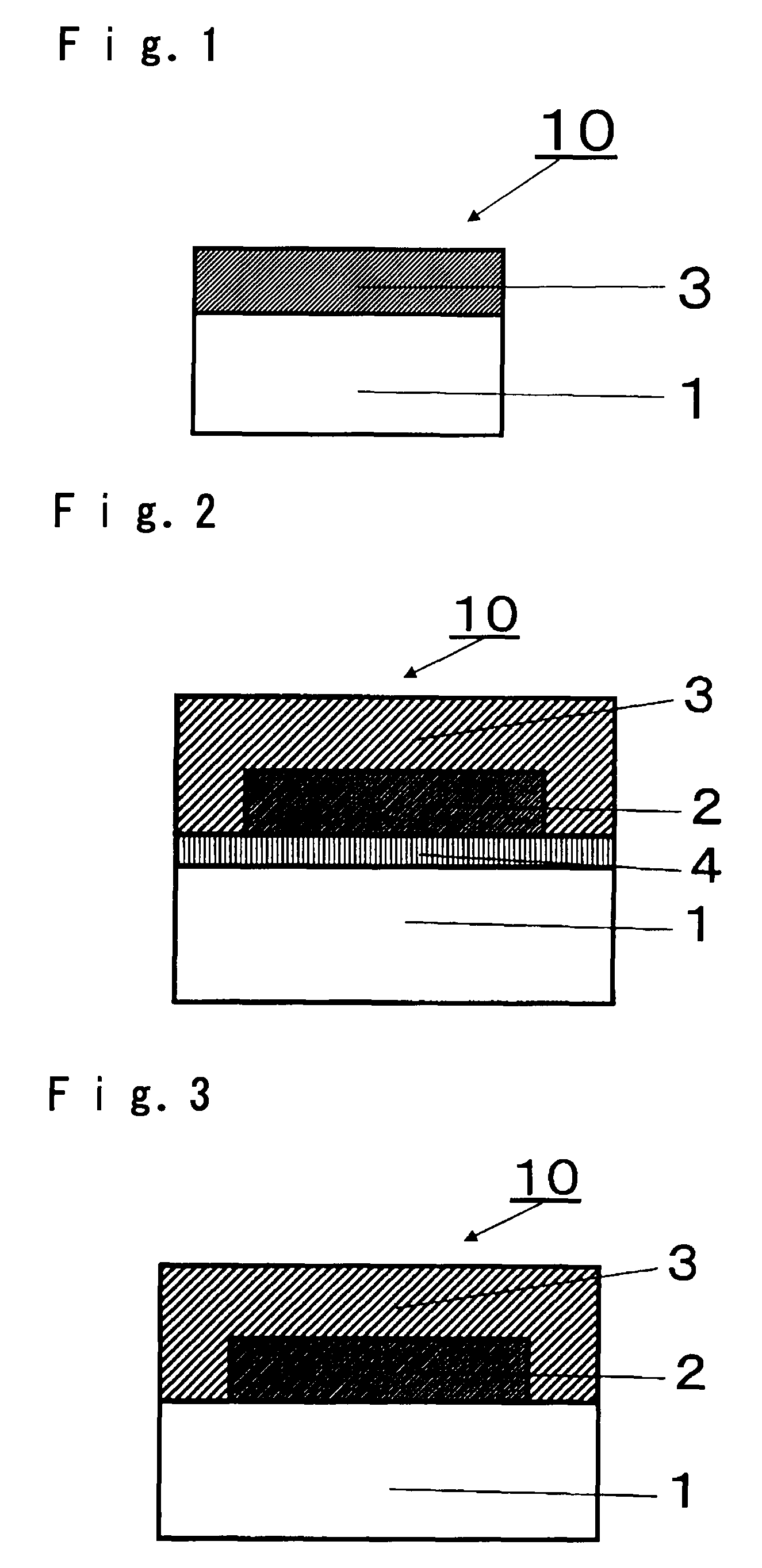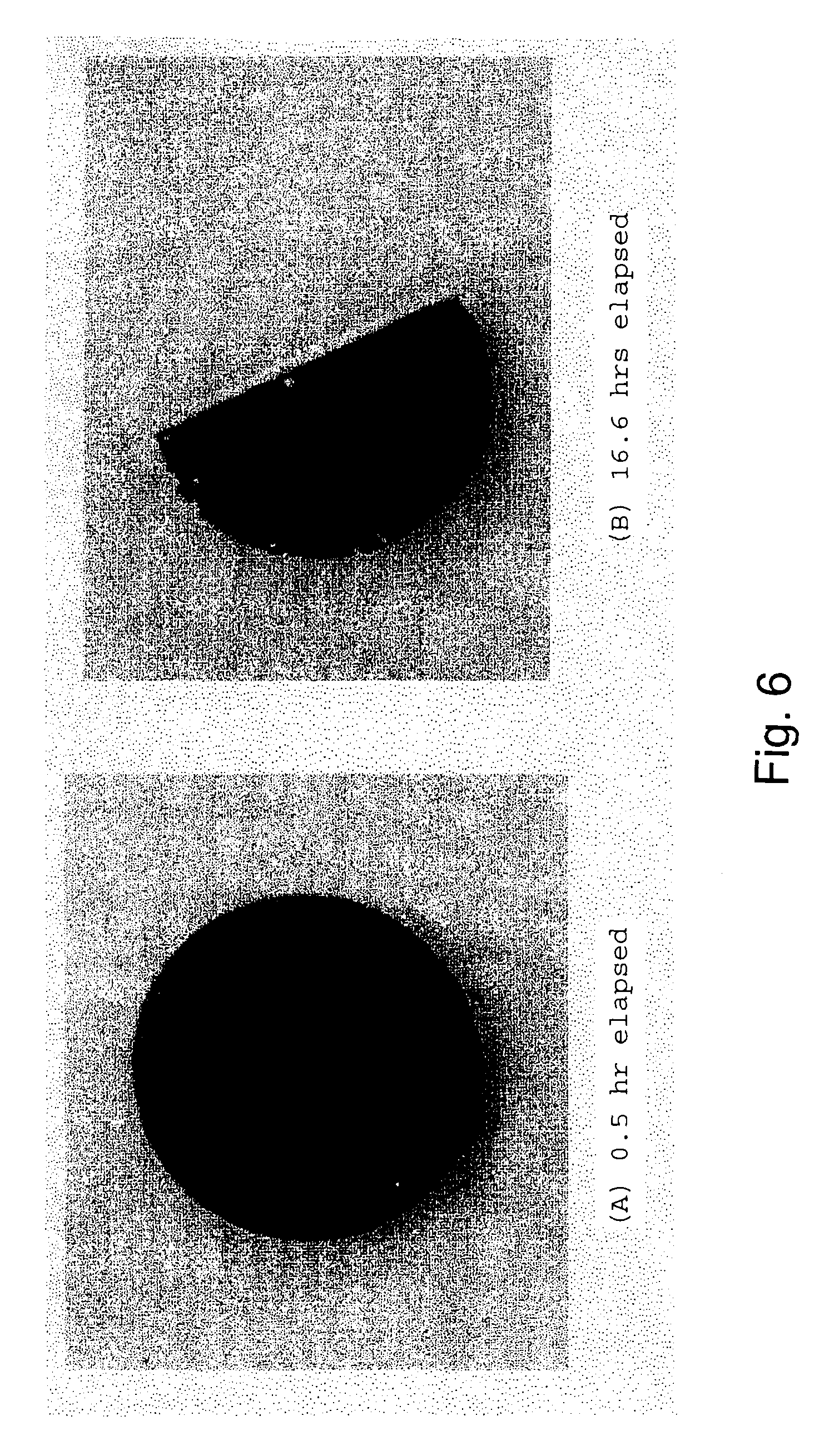Substrate with film and glass for formation film
a technology of formation film and substrate, applied in the direction of vacuum evaporation coating, transportation and packaging, natural mineral layered products, etc., can solve the problems of difficult reduction of defect density, affecting gas barrier property, and affecting glass inferiority in gas barrier property, etc., to achieve high gas barrier property, high transmittance, and high gas barrier property
- Summary
- Abstract
- Description
- Claims
- Application Information
AI Technical Summary
Benefits of technology
Problems solved by technology
Method used
Image
Examples
example 1
[0091]In a vacuum vapor deposition apparatus, a polycarbonate film substrate and a PET film substrate are placed as substrates (minimum visible light transmittance: polycarbonate film substrate 88%, PET film substrate 89%). The thickness of the polycarbonate film substrate is 250 μm and the thickness of PET film substrate is 80 μm.
[0092]As a raw material for vapor deposition, a GeS glass block (Ge: 20 mol %, S: 80 mol %) is placed in a boat tray made of Ta, an electric current of 30 A is applied to the boat tray to vaporize glass component in the vacuum vapor deposition apparatus, to form respective GeS films on the two types of film substrates. The composition of the GeS films formed is the same as the GeS glass block being the raw material. The film thickness of the GeS film formed is 0.7 μm. The glass transition temperature of the GeS film formed is 250° C. according to measurement by DTA. The softening point of the GeS film formed is 750° C. according to measurement by DTA. Furt...
example 2
[0097]In a vacuum vapor deposition apparatus, a polycarbonate film substrate and a PET film substrate are placed as substrates in the same manner as Example 1.
[0098]As a raw material to be evaporated, a SnO—P2O5—MgO glass block (P2O5: 31.3 mol %, SnO: 63.8 mol %, MgO: 4.9 mol %) having a glass transition temperature of 310° C. and a softening temperature of 404° C., was put in a boat tray made of Ta, electric current of 25 A was applied to the boat tray to vaporize glass components in the vacuum vapor deposition apparatus, to form a SnO—P2O5 glass film (P2O5: 44.0 mol %, SnO: 56.0 mol %; hereinafter referred to as P2O5 type glass film) on each of the two types of film substrates. The film thickness of the formed P2O5 type glass film was 0.45 μm. Further, the formed P2O5 type glass film was amorphous according to measurement by using a diffraction X-ray method.
[0099]Here, as also to be described in Example 10, MgO has low vapor pressure and is not contained in the P2O5 type glass fil...
example 3
Evaluation of Gas Barrier Film
[0102]In a vacuum degassing apparatus, a metal Ca thin film was formed on a glass substrate so that the thin film has a circular shape having a diameter of 1 cm. Then, while the substrate was retained in the vacuum vapor deposition apparatus, a P2O5 type glass film of 0.45 μm thick was formed in the same manner as Example 2. At this time, the metal Ca thin film was partially masked so that the P2O5 type glass was not formed on the masked portion. Thereafter, the substrate was taken out from the vacuum vapor deposition apparatus, and left in an atmospheric air at a room temperature to evaluate its gas barrier property.
[0103]At an elapsed time of 0.5 hour, no significant change of Ca was recognized (FIG. 6(A)). However, at an elapsed time of 16.6 hours, a portion of the metal Ca thin film not covered with the P2O5 type glass thin film (right semicircle in FIG. 6(B)), was reacted with water vapor in the atmospheric air and lost its metallic gloss. On the o...
PUM
| Property | Measurement | Unit |
|---|---|---|
| thickness | aaaaa | aaaaa |
| temperature | aaaaa | aaaaa |
| glass transition temperature | aaaaa | aaaaa |
Abstract
Description
Claims
Application Information
 Login to View More
Login to View More - R&D
- Intellectual Property
- Life Sciences
- Materials
- Tech Scout
- Unparalleled Data Quality
- Higher Quality Content
- 60% Fewer Hallucinations
Browse by: Latest US Patents, China's latest patents, Technical Efficacy Thesaurus, Application Domain, Technology Topic, Popular Technical Reports.
© 2025 PatSnap. All rights reserved.Legal|Privacy policy|Modern Slavery Act Transparency Statement|Sitemap|About US| Contact US: help@patsnap.com



